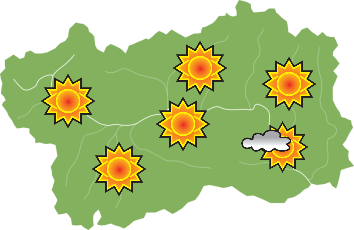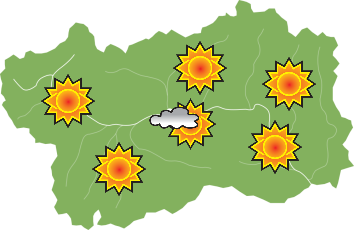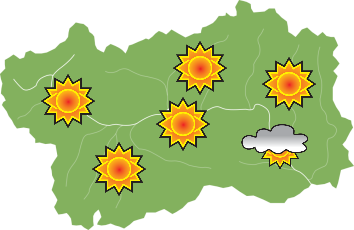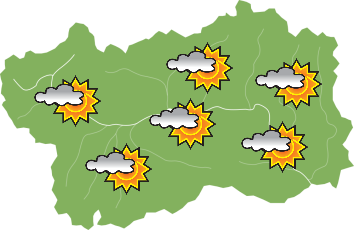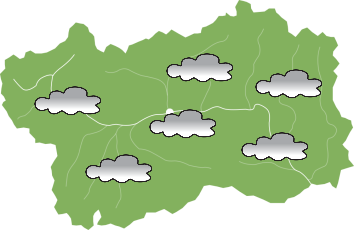Descrizione del percorso
The highest mountain in the Alps. It rises on the Italian-French border between the Graian and Pennine Alps.
From a geological point of view, Mont Blanc is made up of a granitic nucleus around which emerge metamorphic rocks (gneiss, mica schist and chlorite schist).
Over 3,000 metres, the massif is covered by a permanent snow and ice cap. The most significant glaciers on the Italian side are the Miage and the Brenva. The Italian side is made up of a steep and majestic wall while the French side descends in gentler slopes. The passes are rare and difficult. The lowest, the Gigante pass, is at an altitude of 3,359 meters.
The first attempts to reach the summit of Mont Blanc began in 1741 by the British Pococke and Windham who, climbing from Chamonix, reached the glacier they called Mer de Glace. In 1761, the Swiss naturalist, De Saussure, made a visit and offered an award to the first to reach the summit. After several attempts, the valley dweller Jacques Balmat and physician Michel Paccard reached the summit of Mont Blanc on August 8, 1786 climbing the French face. From the Italian face, the first ascent was completed in 1865 by the British Moore with three companions.
The first cable car that from La Palud reached Punta Helbronner (3,462 m), the Aiguille du Midi, and then Chamonix, in France, was completed in 1957.
Today the modern Skyway cable car allows you to reach the same places with cutting-edge technological solutions that offer great emotions and fascinating views.
The Mont Blanc tunnel (11,600 kilometers) was officially opened on July 16, 1965.






